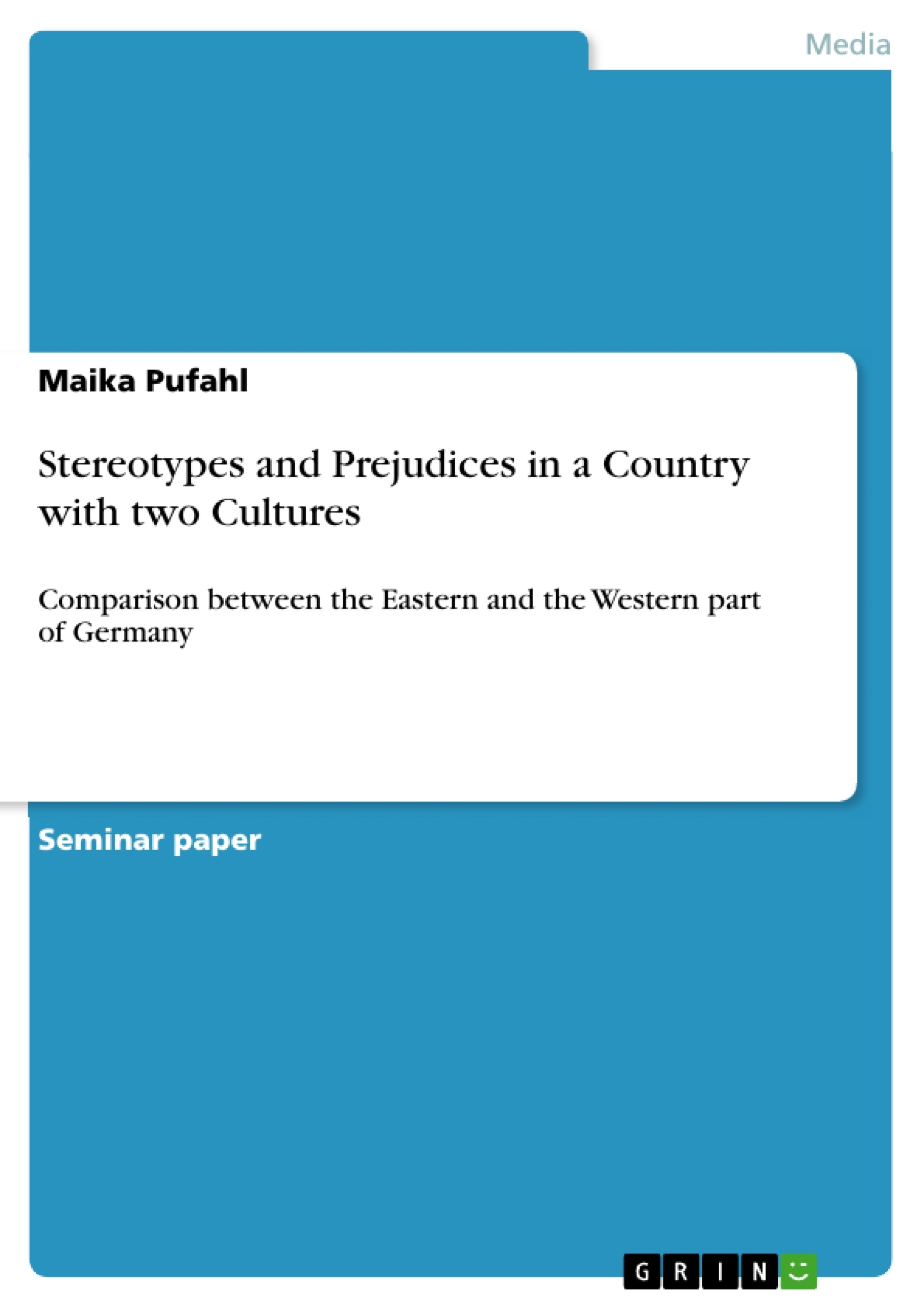English people drink tea, the French love red wine and Germans are always on time – those are just three examples of stereotypes that everybody knows. A Google-search for the term 'stereotype' shows more than 23 million results which give an impression of the importance of the concept in our society. As Ting-Toomey and Chung point out: "It is inevitable that all individuals stereotype." The first part of the following assignment will explain the social-psychological background: What is stereotyping, what are prejudices and what comes next? Thereby, the terms stereotype and prejudice are used differently, as it is used in the book 'Understanding Intercultural Communication' by Ting-Toomey and Chung which is the basis for the assignment. It should be mentioned that there are references where both terms are used synonymously. The second part of this assignment will deepen the topic and explain it using a current example: What do German citizens think about each other even 20 years after the Fall of the Wall? Is it possible to talk about one country as one culture and what kinds of stereotypes and/or prejudices still exist?
Table of Contents
- What is Stereotyping?
- What are Prejudices?
- The Climax of Stereotypes and Prejudices
- Stereotypes and Prejudices in Germany
- Historical Background
- The Current Situation: One Country, two Cultures?
- Stereotypes between the two Cultures
Objectives and Key Themes
This assignment aims to analyze stereotypes and prejudices within Germany, specifically examining the differences between the eastern and western parts of the country. The focus is on understanding the social-psychological background of these phenomena, as well as exploring the historical context and current manifestations of stereotypes and prejudices in Germany.
- The nature and definition of stereotypes and prejudices
- The relationship between stereotypes, prejudices, discrimination, and racism
- The historical context of the division of Germany and its impact on cultural differences
- The persistence of stereotypes and prejudices between eastern and western Germans
- The role of misinformation, media, and societal structures in perpetuating stereotypes
Chapter Summaries
- What is Stereotyping? This chapter defines stereotypes as exaggerated pictures of groups based on inflexible beliefs and expectations. It emphasizes the overgeneralization and oversimplification inherent in stereotypes, and highlights their unconscious and automatic nature, often learned early in life.
- What are Prejudices? This chapter defines prejudices as negative or positive predispositions and feelings towards outgroup members. It explores various functions of prejudice, such as protecting fragile egos, maintaining regularity, simplifying the complex world, and saving time.
- The Climax of Stereotypes and Prejudices This chapter delves into the close relationship between stereotypes and prejudices, outlining their similarities and differences. It highlights the potential for stereotypes to support prejudiced structures, while acknowledging that knowledge of a stereotype does not automatically imply prejudice.
- Stereotypes and Prejudices in Germany
- Historical Background This section provides a brief overview of the division of Germany after World War II, outlining the contrasting development of the Federal Republic of Germany (FRG) and the German Democratic Republic (GDR), culminating in German reunification in 1990.
- The Current Situation: One Country, two Cultures? This section examines the enduring differences between eastern and western Germany, 20 years after the Fall of the Wall. It highlights economic disparities, media portrayals, and ongoing cultural differences that contribute to stereotypes and prejudices.
- Stereotypes between the two Cultures This section presents a table illustrating common stereotypes held by citizens of both eastern and western Germany. It analyzes these stereotypes through the lens of overgeneralization and automatic association, recognizing their potential for perpetuating prejudiced attitudes.
Keywords
The main keywords and focus topics of this text include stereotypes, prejudices, discrimination, racism, East Germany, West Germany, German reunification, cultural differences, misinformation, media, societal structures, and social-psychological phenomena.
- Arbeit zitieren
- Maika Pufahl (Autor:in), 2012, Stereotypes and Prejudices in a Country with two Cultures, München, GRIN Verlag, https://www.grin.com/document/190675



